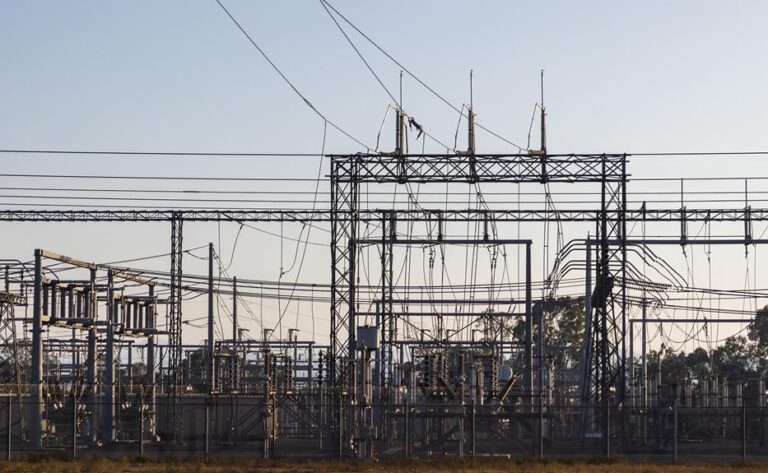Cooler and Faster: The Benefits of Performance Intercoolers
Like a marathon runner gasping for air, your engine craves efficient cooling for optimal performance. Welcome to the world of Performance Intercoolers, where science meets speed and efficiency. We delve into the mechanics, key components, and selection process, offering you the keys to engine liberation. Join us as we explore these power-boosting marvels, simplifying the installation and maintenance processes. Together, let's unlock your vehicle's potential, making it cooler and faster.
Key Takeaways
- Performance intercoolers cool compressed air, increasing its density and allowing for more oxygen molecules in the same volume.
- Cooling the air entering the engine through performance intercoolers results in increased power output.
- The key components of performance intercoolers are the core, end tanks, and piping.
- Performance intercoolers reduce engine strain, improve reliability, increase fuel efficiency, and have tangible benefits in high-stress environments.
Understanding the Role of Performance Intercoolers
In the context of high-performance automotive systems, understanding the role of performance intercoolers is crucial for optimizing engine efficiency and power output. Performance intercoolers function as heat exchangers, reducing the temperature of the air that has been compressed by forced induction systems such as turbochargers or superchargers. This cooling process is vital, as it enhances the density of the intake air, thereby allowing more oxygen into the combustion chamber, which ultimately increases engine power.
Performance intercooler piping, on the other hand, is designed to deliver this cooled, denser air from the intercooler to the engine as quickly and efficiently as possible. High-quality piping, often made of materials like aluminium for their heat-resistant properties, ensures minimal pressure drop and maximum flow rate, contributing to optimal system performance.
A well-designed and properly functioning performance intercooler and its associated piping are key components of any high-performance forced induction system. They are essential for maintaining engine health, increasing power output, and improving overall vehicle performance. This understanding can liberate automotive enthusiasts and professionals by allowing them to make informed decisions regarding upgrades and maintenance. We will delve into the science behind performance intercoolers in the following section.
The Science Behind Performance Intercoolers
To comprehend the efficacy of performance intercoolers, it is essential to understand the scientific principles that govern their operation. This includes an examination of the intercooler's functionality, a study of the relationship between temperature and performance, and a historical look at the design evolution of these critical automotive components. The ensuing discussion will elucidate these points, thereby providing a comprehensive understanding of the science behind performance intercoolers.
Intercoolers' Functionality
While performance intercoolers are known for their ability to enhance engine efficiency, the science behind how they function is rooted in principles of thermodynamics and fluid dynamics. Primarily, they function through:
- Heat transfer: Intercoolers cool the compressed air from the turbocharger, reducing its temperature and increasing its density.
- Pressure optimization: During intercooler installation, it is strategically positioned to ensure the cooled air reaches the engine at optimum pressure.
- Air filtration: Some intercoolers incorporate high-flow air filters, improving engine performance by reducing impurities in the intake air.
The interplay of these functions results in improved combustion, leading to enhanced engine performance. Understanding this functionality is a liberating insight for any performance enthusiast. As we delve further, we'll explore the relationship between temperature and performance.
Temperature and Performance
Navigating the complex relationship between temperature and performance, we must first understand that performance intercoolers work by reducing the temperature of the air entering the engine, thereby increasing its density and enhancing engine power. The science behind this is rooted in the ideal gas law, which states that the pressure of a gas is directly proportional to its temperature and volume, and inversely proportional to its density. As the intercooler cools the intake air, the air's density increases, meaning more oxygen molecules are packed into the same volume. Consequently, this allows for more fuel to be burned and results in increased power output. This fundamental understanding paves the way to our exploration of the evolution of intercooler designs, which we will delve into in the next section.
Intercoolers' Design Evolution
Frequently, the advancement in intercooler design is driven by the relentless pursuit of maximizing engine performance and efficiency. This evolution is a product of scientific innovation and engineering prowess.
- Initially, simple tube and fin designs were utilized, offering basic heat exchange properties but lacking optimization.
- The next evolutionary step involved the introduction of bar-and-plate intercoolers, offering increased surface area for heat dissipation and subsequently, higher efficiency.
- Today, the pinnacle of intercooler design involves advanced computational fluid dynamics and thermodynamics to optimize air flow and heat transfer properties, resulting in intercoolers that are not only efficient, but also lighter and more compact.
The science behind performance intercoolers is continually evolving, pushing the boundaries of what is possible in engine performance and efficiency.
Key Components of Performance Intercoolers
The core, end tanks, and piping constitute the primary components of performance intercoolers that are instrumental in enhancing the efficiency of turbocharged engines. The core is the heart of the intercooler, designed with a multitude of tubes or chambers for air to flow through, often filled with cooling fins that promote heat transfer. Its main task is to cool the compressed air from the turbocharger before it enters the engine.
The end tanks, on the other hand, are essential for directing the airflow into and out of the core. Typically made from aluminium, these tanks have to be robust enough to withstand the high pressures of turbocharged systems.
Lastly, the piping ensures the smooth transit of air between the turbocharger, intercooler, and engine. It is paramount that this component is designed with minimal bends and restrictions to maximize airflow and reduce pressure drop.
Together, these key components work in harmony to make performance intercoolers a critical asset in high-performance vehicles. Next, we shall delve into the correlation between performance intercoolers and engine efficiency.
Performance Intercoolers and Engine Efficiency
Performance intercoolers play a pivotal role in enhancing engine efficiency by effectively reducing intake air temperature and consequently, increasing air density. This process, in turn, allows for a greater volume of air to be fed into the engine, fostering improved combustion and increased horsepower. The purpose of this discussion is to further explore how performance intercoolers contribute to overall engine performance and efficiency.
Enhancing Engine Performance
While traditional cooling systems have their merits, integrating performance intercoolers can significantly enhance engine efficiency and overall performance. This improvement is achieved through three key mechanisms:
- Reduction in intake air temperature: Performance intercoolers boost engine power by reducing the temperature of the intake air, allowing for more efficient combustion.
- Improved thermal efficiency: By facilitating better heat exchange, performance intercoolers decrease the risk of engine knock, enhancing reliability and longevity.
- Increased power output: Cooler intake air means denser air, which leads to more oxygen for the combustion process, increasing the engine's power output.
These benefits, combined with the cost-effectiveness of performance intercoolers, make them an attractive option for those seeking liberation through enhanced vehicle performance. In the next section, we will delve deeper into the role of intercoolers in efficiency optimization.
Intercoolers' Role in Efficiency
A substantial increase in engine efficiency is one of the key advantages offered by the use of performance intercoolers. These components optimally cool the air before it enters the engine, thereby creating a denser air-fuel mixture. This results in more efficient combustion, maximising power output and fuel economy.
| Aspect | Without Intercooler | With Performance Intercooler |
|---|---|---|
| Air Density | Lower due to heat | Higher due to cooling |
| Combustion Efficiency | Less efficient | More efficient |
| Power Output & Fuel Economy | Lower | Higher |
In essence, performance intercoolers play a vital role in engine efficiency. They enable more power per unit of fuel, making them an indispensable asset for those seeking to liberate the maximum potential of their engines. Through their dedicated function, they ensure optimized performance and substantial energy savings.
Selecting the Right Performance Intercooler for Your Vehicle
Choosing the appropriate performance intercooler for your vehicle requires careful consideration of factors such as engine size, turbocharger capacity, and the vehicle's intended use.
- Engine Size: The power produced by your engine influences its heat output. A larger engine will generate more heat and require a more robust intercooler to prevent overheating. Your vehicle's cooling system, including the intercooler, must be capable of dissipating this heat effectively.
- Turbocharger Capacity: The size and capacity of the turbocharger play a crucial role in determining the appropriate intercooler. A larger turbocharger compresses more air, raises intake air temperature, and therefore requires a superior intercooler to cool this air before it enters the engine.
- Intended Use of Vehicle: The choice of intercooler also depends on the purpose for which the vehicle is being used. For instance, a vehicle used for towing or hauling heavy loads will generate more heat and hence require a more efficient intercooler as compared to a car used for daily commuting.
Installation Process of Performance Intercoolers
Once you have selected the right performance intercooler for your vehicle, and you are ready to install it, understanding the installation process becomes crucial for optimal performance and longevity. The process entails the careful positioning of the intercooler, typically at the front of the vehicle to maximize air exposure. It is a meticulous process requiring precision and attention to detail.
The first step involves detaching the bumper cover and existing intercooler, followed by a thorough inspection of the intercooler pipes for any signs of damage. It's crucial to replace any marred pipes to ensure an efficient cooling process. The next step encompasses the mounting of the new intercooler. Utilizing the bolts and brackets supplied, secure the unit in an upright position, ensuring it is level for optimum air flow.
Following this, reattach the intercooler pipes, making sure the clamps are tightened to prevent air leaks. The final stage of the installation process necessitates a systematic check of all connections, and a test drive to confirm that the intercooler is functioning as expected.
Understanding and correctly executing the installation process is the key to unlocking the performance potential of your vehicle. Now that we've explored installation, let's delve into maintenance tips for performance intercoolers.
Maintenance Tips for Performance Intercoolers
Regularly conducting routine maintenance on your performance intercooler is paramount to ensuring its optimal operation and longevity. Just like any other integral component of your vehicle's turbocharging system, the performance intercooler requires diligent attention to prevent any performance degradation over time.
- Regular Inspection: Inspect the intercooler routinely for any physical damages, blockages, or leaks which might impair its performance. This includes checking the core for any signs of damage or debris blocking the airflow.
- Cleaning: Depending on the environment and frequency of use, your intercooler can accumulate dirt and grime that can affect its efficiency. It is advisable to use a non-corrosive cleaning solution and a soft brush to clean the intercooler regularly.
- Coolant Level Check: Always ensure that the coolant level is maintained at an optimal level. Too low or too high levels can lead to overheating or coolant leakage, respectively.
Maintenance of your performance intercooler is not only to keep it functioning at its peak but also to extend its useful life. A well-maintained intercooler can significantly improve the performance of your turbocharged engine. Therefore, follow these tips and enjoy the liberation that comes with optimal performance and extended lifespan of your performance intercooler.
Case Studies: Performance Intercoolers in Action
Analyzing real-world instances of performance intercoolers in action, and drawing insights from their practical applications, can provide valuable knowledge about their functionality and effectiveness. A notable example is found in the world of motorsport where high-performance vehicles are pushed to their limits. In these extreme conditions, intercoolers are critical to maintaining optimum engine performance.
In one case study, a 2007 Subaru Impreza WRX, which was upgraded with an aftermarket performance intercooler, demonstrated significantly improved thermal efficiency and horsepower output. Post-installation testing indicated a decrease in intake air temperature by up to 70 degrees Fahrenheit, and an increase in power delivery by 15 percent.
In another study, a team of engineers examined a 2010 Mitsubishi Lancer Evolution X. The vehicle, equipped with an aftermarket performance intercooler, showed a 20 percent increase in cooling efficiency. This resulted in less engine strain, more reliable performance, and increased fuel efficiency.
These case studies highlight the tangible benefits of performance intercoolers in high-stress environments. They are not just theoretical constructs but practical, high-performance components that can deliver substantial improvements to engine performance and longevity. The data gathered from these real-world applications offers a compelling argument for the adoption of performance intercoolers.
Frequently Asked Questions
How Much Does a Performance Intercooler Typically Cost?
The cost of a performance intercooler can widely vary, typically ranging from $100 to over $1000, dependent on factors such as brand, quality, and vehicle compatibility. It's a crucial investment for enhancing vehicle performance.
Can a Performance Intercooler Be Installed in Any Vehicle or Are There Specific Models It's Suitable For?
Performance intercoolers aren't a one-size-fits-all solution. They can be installed in many vehicles, but the suitability largely depends on the specific model and engine configuration. Customization may be required in some instances.
Are There Any Potential Disadvantages or Risks Associated With Installing a Performance Intercooler?
Yes, potential disadvantages of installing a performance intercooler may include higher upfront costs, increased complexity in installation and maintenance, and potential for damage if not installed properly or used in inappropriate driving conditions.
What Is the Expected Lifespan of a Performance Intercooler?
The expected lifespan of a performance intercooler varies based on factors such as usage and maintenance. However, with regular inspection and proper care, they typically last for several years, often outliving the vehicle itself.
Which Reputable Manufacturers Produce Performance Intercoolers?
Reputable manufacturers of performance intercoolers include Mishimoto, Turbonetics, and Garrett. These companies are known for their high-quality, durable products that enhance vehicle performance by efficiently cooling intake air for increased engine power.
Conclusion
In conclusion, the distinctly significant role of performance intercoolers in enhancing engine efficiency is irrefutable. Their scientific design, key components, and proper maintenance contribute to superior vehicle performance. Ironically, despite their crucial role, they often remain an overlooked component. Therefore, selecting and installing the right intercooler is not just a choice but a necessity for those striving for optimal vehicle performance.







